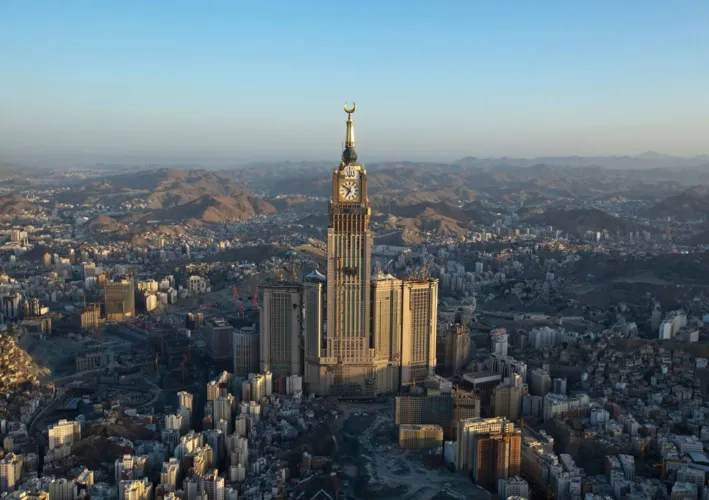In 2025, the Gulf Cooperation Council took a bold step toward regional unity by introducing the GCC Unified Tourist Visa: an initiative designed to make travel across the UAE, Saudi Arabia, Qatar, Bahrain, Kuwait, and Oman as easy as crossing city lines. Inspired by the Schengen model in Europe, the visa is more than just a stamp in a passport: it’s a signpost pointing to a future where tourism and infrastructure in the Gulf are built to work together.
While tourists will enjoy smoother journeys, businesses and governments see something deeper, which is the start of real GCC tourism infrastructure integration. For the first time, travel infrastructure, investment strategies, and even digital tools are being aligned across national borders to serve a shared goal… making the Gulf one of the most accessible tourism regions in the world.
Building for a Borderless Future
At the heart of this transformation is the long-envisioned GCC Railway Project, a 2,100+ km rail network connecting all six countries. With the unified visa expected to increase cross-border tourism significantly, long-stalled projects are getting fresh momentum. The UAE-Oman Hafeet Rail link and Saudi Arabia’s Landbridge rail line are now seen not just as trade routes, but vital channels for passenger movement.
Plans for road and highway connections are also accelerating. The long-discussed Bahrain-Qatar Causeway has re-emerged as a priority, and tourism corridors between Riyadh, Abu Dhabi, and Muscat are being examined with renewed urgency. Airports from Jeddah to Kuwait City are investing in smart border systems and expansion projects to handle what could become millions of additional travellers.
The unified visa is serving as a north star for infrastructure planners, pushing them to think not just about national priorities, but how to create a fluid, interconnected experience across the Gulf.
Hospitality and Aviation Get a Boost
Tourism professionals are already anticipating the ripple effects. Hotels across the region are preparing for new guest profiles: travelers interested in multi-city holidays, regional events, and heritage trails that span several countries.
This shift will benefit both luxury resorts and mid-tier hotels. For example, a tourist could now visit Dubai for shopping, fly to Muscat for nature, and end their trip in Riyadh for cultural experiences, all without facing visa hurdles. According to estimates by regional tourism boards, hotel demand in secondary cities could rise by as much as 25% over the next three years.
Read also: Healthcare Utilization Trends in Saudi Arabia: 100% Coverage in 2024
Airlines, too, are gearing up for change. Major Gulf carriers like Emirates and Qatar Airways are studying new intra-GCC routes, while low-cost carriers like Flynas and SalamAir see potential in weekend getaways and festival travel packages. With the ability to enter in one country and exit from another, passenger flexibility increases, and so do commercial opportunities.
Stitching Together the Gulf’s Transport Systems
None of this will work without physical and digital connectivity. That’s why GCC tourism infrastructure integration now includes efforts to align everything from train timetables to customs systems.
Border authorities are discussing common standards for e-gates and automated immigration. There’s talk of unified tickets that allow tourists to mix and match trains, flights, and buses across countries, especially once the GCC Railway comes online.
Some pilot projects are already in motion. Bahrain and Saudi Arabia have begun coordinating tourism bus services, while Oman's Ministry of Transport is working on digital toll systems that could be adopted regionally to simplify road travel.
The vision is clear: tourists should be able to explore the Gulf without logistical headaches, enjoying a connected journey powered by interoperable infrastructure.
Smarter Travel Through Shared Tech
Beyond roads and rails, the unified visa is pushing the region to think digitally. Rolling out the visa required the creation of joint IT platforms: shared security databases, standardized ID checks, and a single application portal.
But this is just the beginning. Tourism leaders are now envisioning joint mobile apps that let users plan their trip across multiple countries, book hotels, reserve transport, and even access events or guided tours with one login.
A proposed "Gulf Tourism Cloud" would allow governments and private operators to share visitor data (anonymously and securely) to spot trends, identify bottlenecks, and plan infrastructure more effectively. For example, if one country sees a spike in arrivals during a festival, other countries could promote complementary activities to extend the visitor journey.
These tools could also fuel regional marketing campaigns, loyalty programs, and bundled experiences that turn the Gulf into a single, exciting tourism destination.
Challenges on the Road to Integration
Of course, merging six national systems isn’t easy since each country have their own immigration policies, security concerns, and tech platforms. Therefore, Aligning these requires both political will and technical standardization.In addition to infrastructure gaps, smaller states may lack the resources or capacity to upgrade fast enough, while larger states may struggle with harmonizing systems built at different stages of maturity. Even something as simple as rail gauge compatibility or mobile payment interoperability can become a challenge.
And Finally, there is there’s the geopolitical layer. Previous tensions within the GCC slowed down regional projects. While recent unity efforts have gained traction, sustained collaboration will be essential to maintain progress.
All things considered, the potential payoff is enormous…
A Shared Vision for the Region
The unified tourist visa is a window into what’s possible when the Gulf acts as one. It’s not just about smoother vacations, it’s about using tourism as a platform to build integrated systems that make the entire region stronger, more connected, and more appealing to investors and travelers alike.
With smart planning, shared technology, and continued collaboration, the GCC tourism infrastructure integration journey could serve as a model for regional cooperation, and not just in tourism, but across trade, mobility, and digital innovation.
Want to stay ahead of the region’s tourism transformation?
Visit https://saudimarketresearchconsulting.com/ for insights and strategic guidance.
FAQs
1. When will the GCC Unified Tourist Visa be available?
The GCC Unified Tourist Visa, officially approved by all six member states in mid 2025, is expected to launch later this year or by early 2026, offering travelers a streamlined way to visit Bahrain, Kuwait, Oman, Qatar, Saudi Arabia, and the UAE under a single permit; this initiative, modeled after the Schengen system, aims to boost regional tourism, ease cross-border movement, and support broader economic integration across the Gulf Cooperation Council.
2. Will the visa allow travel across all six GCC countries?
Yes, the unified visa will allow seamless travel across all six Gulf Cooperation Council countries Saudi Arabia, the United Arab Emirates, Qatar, Bahrain, Kuwait, and Oman enabling tourists to move freely between these nations without needing to apply for separate visas, in a system inspired by the European Schengen model, thereby promoting regional tourism, economic cooperation, and cultural exchange across the Arabian Peninsula.
3. Which sectors benefit most from the new visa?
The sectors expected to benefit most from the new GCC Unified Tourist Visa include hospitality, aviation, transportation, and digital tourism platforms, as the streamlined visa process is projected to drive a significant increase in cross-border travel, hotel bookings, regional airline demand, intercity mobility services, and the use of online travel agencies and apps ultimately stimulating economic growth and job creation across the Gulf tourism ecosystem.
4. What are the long-term goals behind this visa?
The long-term goals behind the GCC Unified Tourist Visa are to significantly boost non-oil revenue by diversifying the region’s economic base, strengthen regional collaboration through integrated policies and shared infrastructure, and position the Gulf as a cohesive, world-class tourism destination that rivals established global hubs thereby enhancing its global appeal and competitiveness in the travel and hospitality sectors.
5. Are there plans for digital platforms to support this visa?
Yes, comprehensive digital infrastructure is being developed to support the GCC Unified Tourist Visa, including a centralized online portal for visa applications and approvals, as well as a broader digital tourism ecosystem that will integrate travel planning, accommodation booking, intercity transport coordination, and personalized recommendations—streamlining the entire visitor experience and reinforcing the region’s push toward smart tourism and seamless cross-border mobility.







